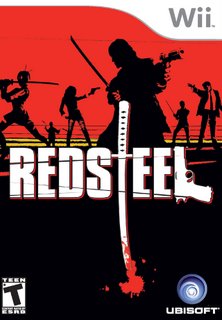 Heroes
Heroes is a modern superhero take, created by Tim Kring.
Though the titular "heroes" have superpowers, the take of the story is more realistic than comics. No costumes, no masks no code names.
The series also has a lot of influence from X-Files, Lost and the Stand.
From
X-Files you get the conspiracy angle: the government is investigating the heroes, including a mysterious agent who claims "not to be a member of any agency that uses initials" and another hero with the ability to erase people's memories. The agent has abducted several of the heroes and performed tests on them, then used his mutant comrade to erase their memories. The coolest thing about this angle is that we're not totally sure that the agent and his comrade are evil.
And oh yeah, the agent is the adopted father of one of the heroes, Claire Bennet (see below).
From Lost you get the serialized, cliffhanger-based storytelling. Although to my mind, as a geek, this comes as much from comics as anything. Still, Lost seems to have FINALLY convinced TV execs that serialized storytelling works on TV (duh).
From the Stand you get the syncronicity and sense of destiny about the heroes. Someone is going to set off a nuke in NYC in 5 weeks (more on how they know that below) and the heroes' destiny is to stop it. Along the way they seem to run into each other a lot, almost like destiny is
trying to pull the group together.
The HeroesIsaac Mendez: Painter with the ability to paint the future. Currently he can only use this ability when high on heroin though it's not clear if this is a physical or mental block. He is one of the first to realize that a nuke will be set off in NYC.
Claire Bennet: A cheerleader with a seemingly unstoppable level of regeneration. As an example, she falls at one point and has a sharp branch puncture her throat and dies. The person she's with drags her to a river and dumps her in. After an unspecified time in the river, she's found and
autopsied, cut open completely. When the ME finally removes the branch, she wakes up, folds her skin closed, heals almost instantly, gets up and walks out of the room.
Hiro Nakamura: Japanese programmer with the ability to stop time, teleport through time and teleport through space. He is the other hero to first realize about the nuke, when he accidentally teleports to the future and sees the nuke go off, teleporting back to the past just in time.
Hiro also stole a comic book drawn by Isaac Mendez (see above) while in the future, which he has used as a
guide to the future on occasion.
A much buffer and more experienced Hiro has also appeared
from the future and given cryptic advice to another hero, Peter Petrelli (see below).
Peter Petrelli: His power is to mimic others' powers. So far we have seen him mimic Isaac's painting ability and his brother Nathan's flight (see below).
Niki Sanders: Single mother of a boy genius, this former internet *ahem* entertainer has an alter ego which has a split personality and seeming superhuman strength, along with a bad-ass tude. She sometimes sees this alter ego in mirrors, though it isn't clear if she needs a flective surface to manifest.
Her ex-husband also seems to one of the heroes.
Nathan Petrelli: This ambitious, amoral politican has the power of flight at supersonic speeds (his body also seems perfectly adapted to flight at these speeds). Committed to being in Congress, he's much more concerned with that than his destiny right now.
Matt Parkma: A police officer with the power to read minds.
ConclusionIf you're a geek, there's no reason not to be watching Heroes. Seriously. And for more information you can check out
9th Wonders, the show's "Official Unofficial Fan Site" which has some nice info as well as spoilers (carefully marked so you'll only come across them if you want to).


